This article has been written by Jaanvi Jolly. The article delves into the intricacies of Section 9 of the Trademarks Act, 1999 which deals with the absolute grounds for refusal of registration of a particular trademark. Broadly, Section 9 talks about two aspects, distinctiveness and descriptiveness. The process, needs and benefits of registration of a trademark are also discussed in the article, along with the consequences of non-registration. A wide array of case laws have been discussed to provide a better understanding of the aforesaid concepts.
Table of Contents
Introduction
A trademark is a mark or a sign that aids the purchase decisions of individuals by indicating the origin or the source of a particular product. The trademark helps the consumer to identify certain aspects of the quality of a product, derived from their own or others’ past experiences.
As far as the interest of the producer or the manufacturer is concerned, trademarks provide an incentive to the manufacturers to invest in improving and maintaining the quality of their products to reap the benefits of the reputation of their brand. The trademark law can be understood as an economic or commercial tool, which, if strategically designed, is capable of producing incentives for maximising commercial efficiency.
There are some marks which are barred from registration due to internal aspects of such a mark. The marks must be distinctive in order to secure registration and when this aspect is absent or the marks are predominantly descriptive, or it is prohibited under some law or are obscene, scandalous or confusing, then the registration would be refused.
The process of registration of the trademark begins by filing an application before the trademarks’ registry. Then the registrar examines the application and provides a report to the applicant within 30 days. The registrar would either refuse or conditionally accept the application after examination of Section 9 and Section 11.
Meaning of trademark
Section 2(1)(m) of the Trade Marks Act, 1999, defines a ‘mark’ in an inclusive manner. A mark under the Trademark Act, 1999 would include a device, brand, heading, label, ticket, name, signature, word, letter, numeral, shape of goods, packaging or combination of colours or any combination of either of these would fall under the definition given in this Section.
Section 2(1)(zb) of the Trade Marks Act 1999 defines a ‘trademark’ as a mark which is capable of being represented graphically and essentially of a distinguishing character, which means that it distinguishes the goods or services of the applicant from those of others. It is further stated that a trademark can consist of the shape of goods, the packaging and the combination of colours.
The word trademark can be broken down into two components, trade and mark. It reflects a mark which is used in connection to a trade to establish a connection between the goods and the manufacturer or producer. The mark, therefore, is an identifier of the source of goods and thus becomes a trademark. For a trademark to be considered a trademark under the Trade Marks Act, 1999, firstly it would have to satisfy the requirements of being a mark under Section 2(1)(m) and subsequently, the mark must fall under the definition of a trademark under Section 2(1)(zb).
The Global Innovation Index, analyses and ranks nations based on their innovation in reference to the economic and geopolitical environment. It ranked around 132 economies on the basis of their innovation, along with highlighting their innovations, strengths and weaknesses. The overall rank of India in this index in the year 2023 was 40, and in the category of trademark by origin, India ranked 54th. In the ranking of the top three innovation economies by region in central and southern Asia, India ranked first; followed by Iran and Kazakhstan.
Further, in the top three innovation economies grouped by income, India fell within the lower middle-income group and ranked first, followed by Vietnam and Ukraine. This clearly reflects that while India has great innovation potential when compared with its neighbours both geographically and economically on the international scale, we still have a lot of room for improvement.
Benefits of registration
Section 28 of the Trade Marks Act provides the rights which an applicant enjoys after the successful registration of his trademark. These are as follows:
The proprietor has an exclusive right to use their registered trademark in respect of the goods for which it has been registered.
It grants the proprietor of such mark the right to file a suit and seek remedies in case of infringement of the trademark.

Grounds for refusal of registration of trademark
The trademarks are a mark which can be used by a particular manufacturer or producer to distinguish his goods from those of others. However, not every mark that they decide to use for the purpose, can be granted registration. The statute expressly provides both absolute and relative grounds for the bar on registration. While the absolute bar is due to causes inherent in the mark itself, the relative bar is in reference to other similar or identical marks which have been granted registration prior in time.
Absolute grounds for refusal
The absolute grounds for refusal of registration are linked to the public policy. It seeks to protect the legitimate interests of the producers/manufacturers in protecting the reputation and goodwill of their goods from other people replicating them or attempting to pass off their goods as that of the trademark holder. Further, they also protect the interest of the consumers in getting the authentic goods originating from a particular source as indicated by the trademark. The absolute grounds of refusal are given under Section 9 of the Trade Mark Act, 1999, which are discussed as follows:
- Marks lack a distinctive or distinguishing character.
- Indicative and descriptive marks in reference to quantity, quality, intended purpose etc.
- Marks that have become customary in language or trade usage.
- Marks that are deceptive or likely to cause confusion.
Relative grounds for refusal
The relative grounds are provided under Section 11 of the Trade Marks Act 1999. The registration is refused here when the trademark sought to be registered is likely to cause confusion to the public on the account of it being similar to an already registered trademark.
Section 9(1) of Trademarks Act, 1999
Section 9(1)(a): lack of distinctiveness
Clause (a) of Section 9 (1) deals with the grounds for refusal of registration based on a lack of distinctive characteristics. The phrase “devoid of any distinctive character” means that the trademark is incapable or insufficient to distinguish the goods or services of the person seeking registration from the goods or services of another person. The unique or the differentiating character is missing in the trademark sought to be registered.
This sub-section can bar registration of a trademark on the ground of lack of distinctiveness, however, the meaning of the term distinctiveness is not directly defined in the Act. In a catena of judgements, the court has interpreted the term to mean that the trademark in respect of the goods of a particular person, must play the function of making the public unmistakably and immediately connect the mark with the particular manufacturer.
Relevant case laws
Muneer Ahmad vs. Registrar of Trade Marks (2023)
In this case, the word ‘Bharat’ written in style, along with the figure of a slanted paintbrush was sought to be registered in reference to paintbrushes, artistic brushes, and roller brushes. The Registrar of Trademarks refused the registration on the ground that the specific trademark is highly descriptive in nature and would design the quality and the purpose of the goods.
The trademarks which lack the distinctive character as required under Section 9 could be divided into two categories. Firstly, there are marks which inherently lack distinctiveness. In other words, they are incapable of distinguishing between the goods and services in respect of the trademark and the goods and services of another person. These words are incapable of being used to distinguish the said goods in the particular category.
In the second category, the trademarks lacking distinctiveness would be due to their common usage in connection with the specific goods or services, and are thereby incapable of acting as the identifier of the source of such goods and services in the latter case, the registrar must make a specific reference identified. The marks which are common in the trade and thereby are refused registration.
The court held that the said trademark or device mark must be seen as a whole to examine the conditions of Section 9. In conclusion, the court held that the device mark of which the registration was sought. If seen as a whole was distinctive. The word ‘Bharat’ said to lakh distinctiveness and is therefore registrable.
Geep Flashlight Industries Ltd. vs. the Registrar of Trade Marks (1972)
In this case, the question of registration of the trademark ‘Janta’ for electric torches. The registration of the mark was refused on the grounds of it not being distinctive. The applicant proved the fact of his impressive sale, along with orders placed based on newspaper clippings. This successfully proved that the trade name has been used for a long time and it has also been extensively advertised, leading to the term acquiring distinctiveness by the use.
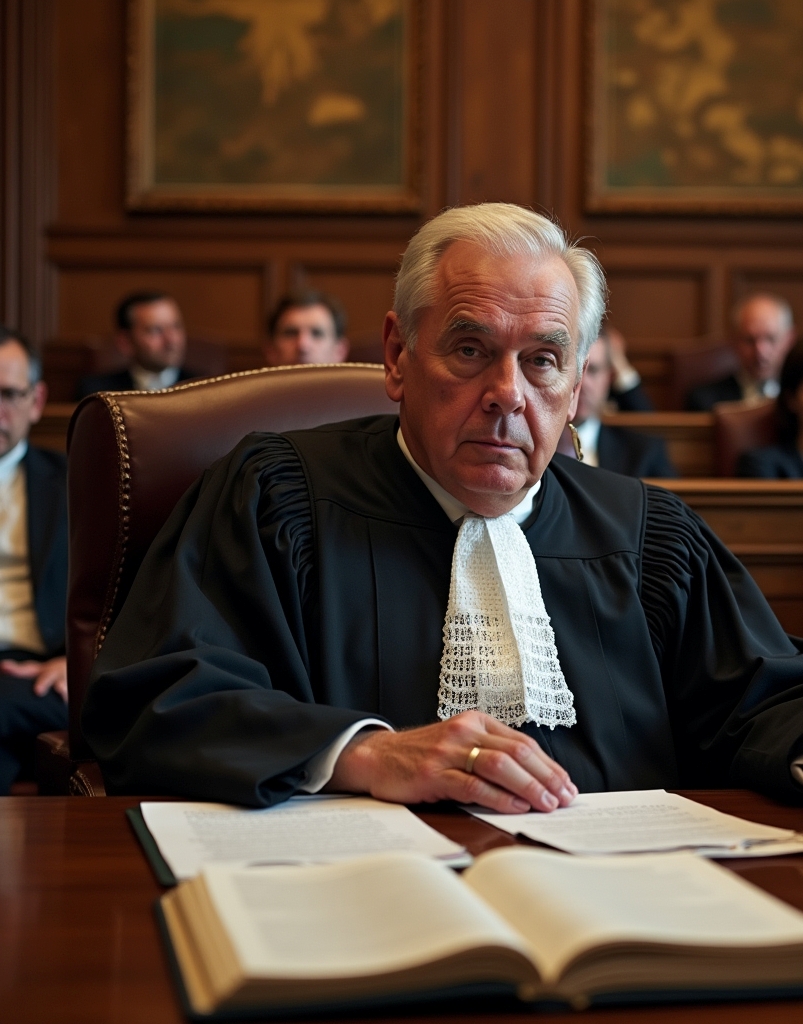
The registrar further refused registration on another ground, that the term ‘janta’ has a direct indication towards the quality of the goods that is, the name indicates that they are cheap and made to cater to the general public (for the ‘Janta’). The court held that merely because the torches bearing the name ‘janta’ are the cheapest, it would not be sufficient to conclude that janta is descriptive of their quality. Price is an important factor in the mind of the consumer, but it is not the sole one, attributes like utility would be of prime consideration. If the quality has been compromised, a mere low price would not make the product very popular.
In this case even though the appellant had led evidence to prove that its torches bearing the name ‘Janta’ have acquired considerable reputation in the market, still the word ‘Janta’ is in fact not adapted to distinguish or is in fact not capable of distinguishing the appellant’s goods. Further, even if the appellant’s proposed trade mark satisfies the conditions prescribed in Section 9 of the Act, the appellant is not entitled as a matter of right to the registration of his trade mark.
The reason provided by the registrar for refusal to register the word “janta” was upheld by the court. In India the word is used very widely in various situations to denote the common man and therefore the word ‘Janta’ is one of those words which should be kept open for the use of any person for a bona fide descriptive or trading purposes and that the appellant should not get monopoly right over this word. Thus, the court held that the mark could not be registered.
Section 9(1)(b): Descriptive marks
This subsection provides a bar for the registration of marks which are merely descriptive in nature. As a general rule, a descriptive mark cannot be allowed to be monopolised. However, if it is proved by the appellant that due to a long period of use the descriptive mark has lost its primary meaning and has acquired a secondary distinctive meaning in reference to the goods of the applicant, it may be granted registration.
The subsection provides a list of characteristics which, if are a part of the trademark, would be treated as a ground for refusal of registration of that trademark. The aforesaid indications in the trademark designate the following:
- Kind– The type or category of a product, for example: an SUV car cannot be granted registration as a trademark.
- Quality– The words indicative of the standard of a product cannot be registered as a trademark, for example: best or No.1.
- Quantity– The terms indicative of the quantity like weight and number cannot be granted trademark registration.
- Intended purpose– A mark which is descriptive of the use of the product that is not registerable, for example: floor cleaner, shampoo, room freshener, etc.
- Values– The terms like degree or Celsius are not registrable as a trademark (the trademark for the brand 62 degrees east, owned by Deepika Padukone is a good example of using value which is generally a descriptive term in a fanciful or arbitrary way.
- Geographical origin– These include terms of countries, cities and towns which are indicative of the source place of the product. For example: Shimla Apple cannot be granted trademark registration.
- Time of production of goods or providing of service– These terms are indicative of when the goods or service are provided. For example: using the term 24×7 regarding a service cannot be granted trademark regulation.
- Other characteristics of the goods or services– For instance name of football players or football teams on goods related to sports gear, use of terms like teeth or gums for a dental clinic.
Relevant case laws for trademark which includes a geographical mark
Foreign cases
Liverpool Electric Cable Co Ltd case (1929)
In this case, registration was sought for the trademark Liverpool, but the Chancery Division Court refused registration since it was the name of an important commercial centre. Herein, the court observed that even if the name has acquired distinctiveness in reference to the goods for which it is sought to be registered, the registration of a geographical name can be refused.
Sir Titus Salt, Bart., Sons and Co.s Application XI. (1894)
In this case, the registration of the term ‘Eboline’ was sought for silk goods. The Chancery Division Court held that ‘Eboli’ is the name of a town and the addition of the suffix ‘ne’ is not sufficient to consider the word as an invented term. In order to successfully register such a word, the term must be an invented word in fact and not merely in the belief of the person claiming its registration. The objective of such prohibition is to prevent the acquisition of monopoly in the name of a place by a particular person and resultantly suggest that the specific goods have an origin or connection with that place where in fact, no such connection exist.

Indian cases
Muneer Ahmad vs. Registrar of Trade Marks (2023)
In this case, the term Bharat along with a slanted paint brush was sought to be registered in reference to goods like paint, brushes, artistic brushes, etcetera. The trademark examiner held that the brush is indicative of the intended purpose of the product and would thereby be non-registrable under Section 9(1)(b). The Delhi High Court held that the examiner wrongly examined the mark partially with the reference only to the paintbrush, which only forms a part of the whole device mark consisting of the word Bharat in a particularly distinctive style along with the paintbrush. The court held that the mark when seen as a whole cannot be said to be descriptive of the product in reference to which it is sought to be registered. Bharat is the more prominent feature of the mark, and that has no descriptive relation to the kind of goods in respect of which the mark is used. The court concluded that in invoking either Section 9 or Section 11, the mark has to be viewed as a whole. Therefore, the court concluded that the mark is distinctive, and the registration can be granted.
Hi-Tech Pipes Ltd. vs. Asian Mills Pvt. Ltd. (2006)
in this case, the plaintiff company was involved in the business of manufacturing and sale of steel pipes, and the mark Gujrat was used in reference to such goods. The Delhi High Court observed that the question to be decided is whether the term has acquired any secondary meaning and does it have distinctiveness with respect to the goods produced by the company. The defendant also plotted to use the similar term ‘GUJARAT’ in respect of similar goods. The court held that merely because the name is of geographical description, It does not mean that an action of passing cannot be maintained by the company. The burden on the trademark holder is to establish the probability of deceit or confusion by the use of a similar name.
Imperial Tobacco Co. of India Ltd. vs. The Registrar of Trademarks (1986)
In this case, the registration of the trademark ‘SIMLA’ was in question in reference to cigarettes. Initially, the mark was refused registration as the word Simla was held to be indicative of the geographical origin and thereby was an absolute prohibition to registration under Section 9(1)(b). The Calcutta High Court held that the term is a geographical indication and is accompanied by hills as a part of the mark which points towards its usage in the ordinary or geographical sense. Thereby the exception granted in the cases of arbitrary or fancy use of a descriptive mark which leads to acquisition of a secondary meaning is not be applicable here.
In this case, some observations regarding geographical names as trademarks, were discussed. As a general rule, a geographical term in reference to its general significance is inherently incapable of being registered. However, some minor exceptions have been accepted to this rule in various judicial decisions.
When a geographical location is used to indicate a specific locality, country or state, it cannot be allowed to be registered and thereby monopolised by a particular individual as a trademark. However, in cases where the geographical word is not used in the geographical indicative sense in order to establish the place of origin or the source of the goods, but rather is used in a fancy, creative or arbitrary way, only intending to indicate the ownership, irrespective of the location can in some cases be allowed registration as a trademark. There are instances where geographical terms are used to identify and distinguish the goods belonging to a specific producer or manufacturer. In this case, such marks can only be allowed registration if the terms are such as would never occur to other producers or manufacturers to use in case of similar goods. It means that the particular mass or word is used in a fanciful full way and not as a descriptive or indicative term.
On the other hand, the terms referring to or indicating a major industrial city would be unregistrable for any class of goods. In between these two extremes, there are marks which have evidence of distinctiveness if the applicant is able to prove that she has a natural or legal monopoly in reference to the particular goods along with the place concerned, he may be able to seek registration of that trademark. However, that alone would not enable him to get a geographical name registered, he would also have to establish substantial evidence of acquired distinctiveness.
In conclusion, it can be stated that the reference to geographical terms in the ordinary sense would not have distinctiveness. This rule has been relaxed where the trademarks, or marks to be registered, refer to a small and insignificant place or where the term lacks any geographical significance. To conclude, where the geographical term to be registered is the name of an important country or a town of commercial significance, the mark will not be registered unless the evidence of long and extensive use is proved, which leads to it acquiring distinctiveness.
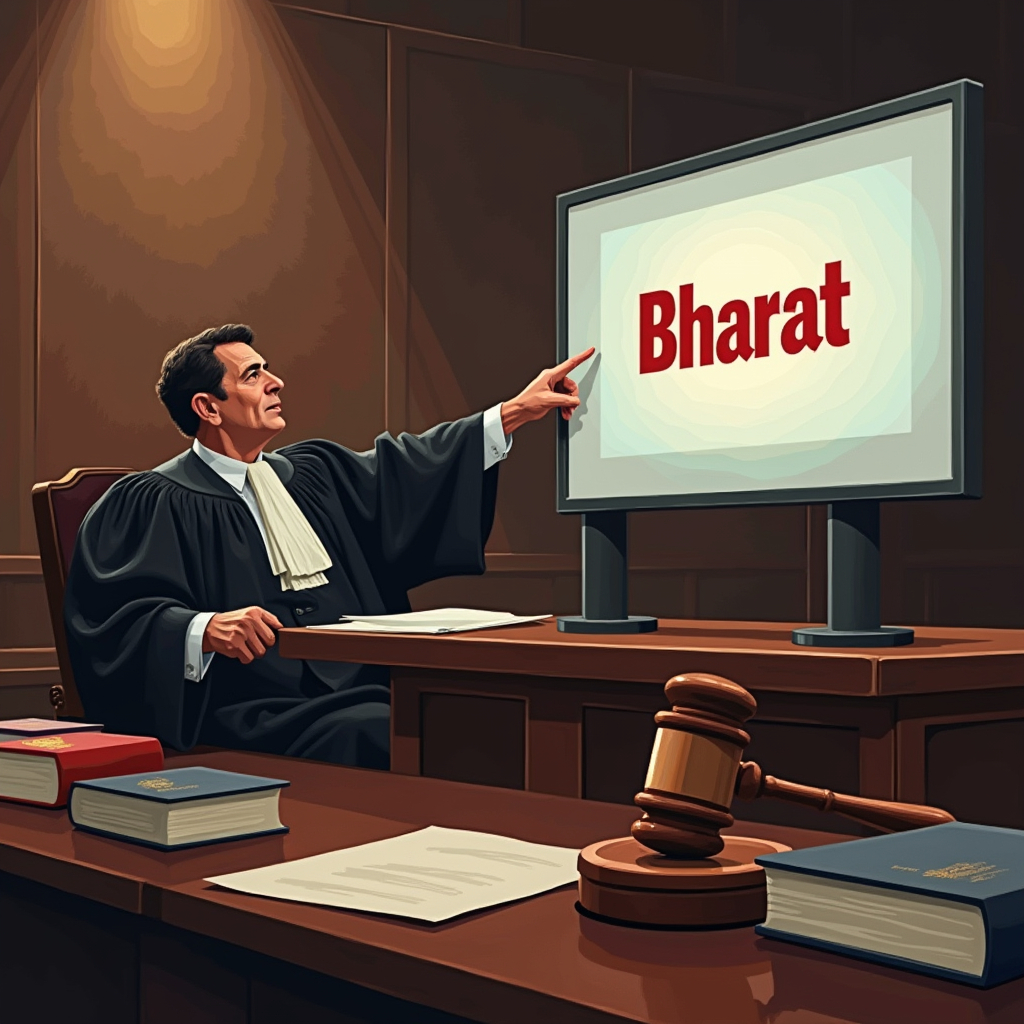
Bar on registration of trademarks which are descriptive of quality or character of goods
M/s Hindustan Development Corporation Ltd. vs. The Deputy Registrar of Trade Marks (1955)
In this case, the registration of the term ‘Rasoi’ as a trademark was up for discussion. The question arose whether the use of the term ‘Rasoi’ as a trademark in respect of hydrogenated oils would be a reference to the character or quality of the product. In dealing with the question the Calcutta High Court stated that the mark must be looked at not in the grammatical or literary significance but rather the view of the public at large. Therefore, the term ‘rasoi’ would be generally linked to cooking and the normal use of the oil is also for cooking. Therefore, the people in the trade and the ultimate consumers would indubitably link the word ‘rasoi’ to the character of the goods. Thus, the mark was refused registration.
Marico Limited vs. Agro Tech Foods Limited (2010)
In this case, the appellant had registered the Trademarks “LOSORB” and “LO-SORB” for different products in class 29 like viz oil, ghee, etc.
The respondent was selling its edible oil/sunflower seeds oil under the trademark “Sundrop”. They claimed that the presence of anti-foaming agents in the sunflower oil resulted in less oil being absorbed when used for frying. On the packaging, the term ‘Sundrop’ was used along with the phrase ‘with low absorb technology’.
The Delhi High Court held that the appellant cannot be held to be entitled to the exclusive ownership of the term ‘low absorb’ as it is a general, descriptive word, indicating the low absorbing quality of a product. It is not an invented word, rather is a simple amalgamation of two English words. The court held that such descriptive terms are barred from being registered as a general rule under Section 9(1). The phrase “low absorb” surely and indubitably presents the meaning that something which absorbs less, and when used with respect to edible oil, it is descriptive in that it refers to low oil being absorbed
Nevertheless, the proof of application of the proviso to the case may enable registration where acquired distinctiveness is established. The court concluded to state that when the registration of such a term is sought, the applicant must be wary of the use of such term in a descriptive sense by others. Low absorb is not an unusual syntax and the same can almost be said to be a meaningful part of a sentence or phrase in itself. Adoption of such terms naturally entails the risk that others in the field who would also be entitled to use such phrases.
Cadila Healthcare Ltd. vs. Gujrat Co-operative Milk Marketing Federation Ltd & Ors (2009)
In this case, the dispute was related to the trademark ‘sugar free’. It was contended that it is merely a combination of two words, it is not inherently distinctive and is rather descriptive of its characteristics. The mark had not acquired any distinctiveness by usage beyond the artificial sweetener category, and therefore the appellant cannot have an exclusive claim over usage of the mark in respect of any or all products. The respondent could not be absolutely restrained from using the term ‘sugar free’ in a descriptive usage. However, in case a third person enters the category of artificial sweeteners with the trademark of the appellants, he can be restrained.
Further, this position is clarified by Section 30(2), which deals with the limits placed on the effect of a registered trademark. Subsection (2) provides that where a registered trademark is used by another to indicate the descriptive nature, which includes the kind, quality, purpose, value, geographical origin etc of his goods or services, this would not be considered as an act of infringing the trademark.
In the present case the adoption of the term sugar-free as the trademark, the plaintive must be aware that it is a descriptive word which is used by a lot of manufacturers and is in widespread use some degree of confusion is inevitable. In trademarks of a descriptive nature, a blanket ban on the usage of such terms cannot be issued, especially when the registered trademark is only used as a descriptive phrase for the product and not as the trademark.
In conclusion, the Delhi High Court held that the mark ‘sugar free’ which is clearly a descriptive mark indicating the quality of the product, would be an absolute ground for refusal of registration unless it has acquired a distinctive character as per Section 9(1). The mark can at best be said to be distinctive in reference to the artificial sweetener category, and mere marketing of another product with the trademark would not give him the right to claim distinctiveness in reference to all food products.

Info Edge (India) Pvt. Ltd. and Anr. vs. Shailesh Gupta and Anr. (2002)
In this case, the appellant had the domain name ‘naukri.com’ registered. Subsequently, the respondents also registered a similar term ‘naukari.com’. The Delhi High Court observed that when the business is carried on by the respondent under a trade name which bears close resemblance to the name of the appellant who has over time built goodwill around it, it is likely that such usage by the defendant would cause confusion. It would mislead the public into believing that it bears a connection to the trade of the plaintiff. Further, the distinction between a generic word and a descriptive word is very thin, thereby such a term could acquire a secondary meaning by long use, establishing its reputation.
The court also noted that even if the word in question is generic, yet, if it is found by the court that such mark has attained distinctiveness and is associated with the business of the plaintiff for a considerable time and thereafter the defendant adopts a similar word as one of his marks to induce innocent internet users to come to his website, the same establishes dishonest intention and bad faith. Thus, the court would grant an injunction to protect the business of the plaintiff.
Online India Capital Co. Pvt. Ltd. And vs. Dimensions Corporate (2000)
In this case, trademark protection was sought for ‘www.mutualfundsindia.com’. The Delhi High Court refused to grant any protection to domain names consisting of generic words, which were merely descriptive of the services being provided by the concerned parties. It may, however, be noticed that in this case, it has been observed that there was an absence of material or the material placed on record was insufficient to show that the marks had acquired any secondary meaning, which is a ‘precondition’ for granting protection to descriptive names.
Bharathiya coffee workers catering vs. Indian coffee workers Co-Operative (1998)
In this case, the question raised before the Kerala High Court was related to the usage of the name ‘Indian Coffee House’.
The respondent before the Apex court were originally the plaintiffs which was a society formed by the employees of the Indian coffee board and they were running coffee houses in the name of ‘Indian coffee house’ as distinct from the India coffee house run by the present appellant. The managing director of the appellant company was earlier a member of the respondent society, but due to difference of opinions, he formed a separate entity and started doing the identical business. The appellant used a similar name for his establishment. The respondent filed the suit for permanent injunction against the appellant from using the term ‘India coffee house’.
The court held that here in the plaintive society does not have any exclusive right to run coffee houses with the name, Indian coffee house. it is a generic name which is used by the ex employees of the coffee board. Even if we accept the contention that the Indian coffee house run by this particular society has earned a goodwill, it would not per se enable them to restrict other ex employees from running coffee houses in the same name or to claim a passing of action.
Christian Louboutin Sas vs. Abubaker & Ors (2018)
In this case, the plaintiff-appellants, the company Christian Louboutin SAS filed the suit for injunction against infringement of its trademark: the ‘red sole’ of its shoes. The Delhi High Court analysed the definition of ‘mark’ given under the Trademark Act and stated that the term used by the legislature is ‘combination of colours’, which impliedly would mean that a single colour would not come within the term ‘mark’ and thereby the first basic sine qua non of a thing becoming a trademark i.e., of whatever is sought to be claimed as a trademark must first also be a mark is not fulfilled here. Thus making ‘combination of colours’ a ‘sine que non’ as distinguished from one single colour, the latter cannot be claimed as a trademark.
In the present case, the issue was in reference to a single colour used in the soles of shoes for ladies. In conclusion, it was said that the definition of a mark is not capable of being registered as a trademark. Thus, once it has been conclusively stated that a single colour, cannot be a mark and therefore cannot be a trademark, the question of the plaintiff claiming use of a single colour as a trademark by getting benefit under the proviso to Section 9(1) of the Trade Marks Act will not arise, as this proviso will come into play if there is first of all a trademark because of a mark being used in the course of a trade as a trademark.

The court further cautioned that in case a particular trademark of a person is claimed to have adopted a secondary distinctive meaning in reference to the applicant’s products, such registration cannot entitle the person to stop other people from using this expression only to describe the descriptive characteristic features of the products.
The court further stated that even when a single colour is supplied to a particular product, it would pertain to or indicate its characteristics. It is used to make the product more attractive. The function of making the product more appealing is not a trademark function as a feature of the good. Trademark has a specific purpose of indicating the origin of the product from a particular manufacturer or producer. Even if the red soul of the shoe is registered, nevertheless, it cannot be granted exclusivity in its usage, thereby depriving others from using the same feature.
Section 9(1)(c): Customary terms
This subsection provides the ground for refusal of registration where the trademark sought to be registered consists of marks which have become:
- Customary in usage or commonly used in the current language; or,
- Used in the established practice of trade in bona fide.
When a trademark is evaluated in reference to the goods or services for which the registration is sought, it is necessary to examine the perception that the general public has towards such a trademark. If it is a mark which is associated with a particular idea in the mind of the people, then as a general rule, such symbols cannot be allowed for registration.
For example, the cross sign in red colour is related to the perception of people to hospitals, various traffic signs have their own established meanings. These cannot be allowed to be monopolised by a particular individual. This is because these are not distinctive and have already fixed meaning or relevance in the minds of the people. A trademark is a mark which is used to distinguish the goods or services of one person from the other, and the registration of such customary or pre-established marks would not serve the purpose.
Section 9(1) proviso: Overcoming objection under absolute grounds for refusal by proof of acquired distinctiveness
This proviso to the subsection states that even though a ground for refusal has been made in the case of a particular trademark, nevertheless, it can be registered if prior to the date of application for registration it has either:
- Acquired distinctive character due to its usage or,
- Has become a well-known trademark.
The primary objective of a trademark is to identify or indicate the source of origin of a particular good or service. A prolonged usage of the term in a few cases creates a situation where a certain trademark gets mentally fed into the minds of people as belonging to a particular manufacturer. The trademark acts as a surety for the people who seek to buy products from their trusted brands. This long-term association creates an acquired distinctiveness or a secondary meaning to innately indistinct or descriptive words.
When the court comes across a case, wherein it has to examine whether a mark has acquired a distinctive character or not, the following factors are usually considered:
- What is the market share of the goods which have been using the said mark?
- How intensive geographically, widespread and long user has been in reference to the mark?
- The cost incurred by the applicant in the promotion and popularisation of the mark.
- The proportion of the segment of people who identify the source of the goods as indicated by the trademark.
- The standing of such goods in the various trade and commerce circles.
After analysing all of these factors, if the registrar or the court is satisfied that the mark has acquired sufficient distinctiveness in the eyes of the people, to which the public identifies the goods as originating from a particular source due to the trademark, then the condition for the application of the proviso, which is the establishment of acquired distinctiveness must be held to be satisfied.
Where a mark Is refused registration on the ground of lack of distinctive character or consisting of indicative terms or consisting of signs which have become customary or commonly used in the practice of trade, an exception is still available. In case the person is able to show that the mark has acquired distinctiveness due to the use made of it before the date of application for registration, then the registration of such a trademark may be allowed.

If he is able to show that prior to the application being presented, the mark has become distinctive and is capable of distinguishing the goods of the person from another, the registration may be allowed. The distinctiveness, which may be acquired between the date of application and the date of examination by the authority, is immaterial. In order to prove acquired distinctiveness, the applicant is duty-bound to establish that the public perceives and views the mark as indicative of the applicant’s goods.
In the case of Kaviraj Pandit Durga Dutt Sharma vs. Navaratna Pharmaceutical Laboratories (1965), the Supreme Court stated that where a trademark has been continuously used by a business, with alterations or additions which do not impact its identity the registration would not be refused on the grounds of it not being distinctive. The evidence establishing acquired distinctiveness can be perused to examine the application of the proviso to section 9(1). Further in the case of Marico Limited vs. Agro Tech Foods Limited (2010), the position in relation to acquired distinctiveness was clarified, “when the descriptive trademark is used only by one person undisturbed for a very long period of time, without anyone else attempting to use the trademark during this long period time, a case can be established of a descriptive word having achieved distinctiveness and a secondary meaning.“
In India, no established statutory guidelines are provided which are to be satisfied as a proof of acquired distinctiveness. Due to this, the courts play a proactive role in determining the question of acquired distinctiveness in every case as per the facts and circumstances before it.
The process of acquiring distinctiveness in respect of a trademark is a difficult task. No particular time has been fixed for which the mark must be used in order to be said to have a quiet distinctiveness. There can be cases where, for various reasons, a trademark acquires distinctiveness in a very short period. In other cases, there can be trademarks which never acquired distinctiveness. Therefore, the period of use is a relevant factor, but not a sole one.
This view was reflected in the case of Mrs. Ishi Khosla vs. Anil Aggarwal (2007) where the Delhi High Court stated that to acquire a secondary distinctive meaning, the product need not be in the market for any particular number of years. Where the idea of the product along with a particular trademark is new, fascinating and appealing to the public, it can have the capability to become popular in a short period. The burden of proof lies upon the applicant to prove that his descriptive trademark has attained distinctiveness on account of its usage.
The court also held that the proof of distinctiveness must be established in respect of every article to which the trademark is applied and not just for a single product.
Trademark registered in breach of Section 9(1)
Section 32 of the Trade Marks Act deals with the situation wherein a trademark is registered in violation of the provisions of Section 9(1). It stipulates that due to such violation, the trademark would be declared invalid unless it has acquired a distinctive character in relation to the goods or services in respect of which it is registered, after it. The opportunity to prove the acquired distinctiveness will be given before any legal proceedings are initiated to challenge the validity of such registration.
Therefore, it protects a mark which might not have been a distinctive character when it was registered. However, prior to the proceedings challenging its validity, it acquires the distinctiveness then registration will not be invalid because ultimately the purpose of a trademark is to distinguish the goods of one person from another.
Relevant time to check if the trademark has acquired distinctiveness
Wherein an inherently descriptive trademark is sought to be registered by the application of the proviso to Section 9(1), the question arises at what point is the acquired distinctiveness to be proved?
When we read the proviso to Section 9(1) of the Trade Marks Act 1999, it states that in case there is an absolute bar on the registration of a particular trademark nevertheless, such a trademark can be registered if, prior to the date of application, it has acquired a distinctive character or is a well-known trademark.
Further, in Section 31(2) and Section 32 of the Trade Marks Act, 1999, the position is established that as a general rule, the evidence claiming distinctiveness acquired by the usage has to be presented on the date when the application is filed for registration. However, by virtue of Section 31, this period can be extended up to the actual date of registration.
As per Section 32 a person can produce evidence in order to establish distinctiveness, which is acquired even after the registration process wherein the proceedings are initiated by a third party, claiming the invalidity of such trademark. In these proceedings under Section 57 of the Trade Marks Act 1999, the evidence can be produced establishing distinctiveness. However, no such evidence can be produced in a civil suit in a civil Court where an infringement action is initiated in regard to a registered mark.

Impact of a descriptive trademark being registered on account of acquiring distinctiveness and the right of other people to use it in a descriptive sense
It has been clarified by the Supreme Court of India in several judicial decisions that when a descriptive trademark is registered on the basis of acquired distinctiveness, the proprietor of the mark would not be able to monopolise it. In other words, if a person is a registered owner of a trademark which is indicative of the characteristics of the goods, then despite such registration, he will not be entitled to the exclusive usage of the mark. He would not get the right to prohibit another person from using it, since the mark is descriptive in nature and is indicative of the characteristic of his own manufactured goods. Herein, it would not result in the infringement of the registered trademark. For instance, the usage of ‘24/7’ as a registered mark.
A characteristic of the goods would include the functional aspects which give an appeal to the products and whenever a trademark is offered, a kind which can also be a characteristic or a description of the goods then merely because such a descriptive trademark has been registered. It cannot prevent other manufacturers or sellers from using such characteristics. It must be however remembered that this characteristic must not be used as a trademark, but rather only as a feature of the goods.
This is based on the understanding that when a person gets a descriptive trademark registered, he does so knowingly and understands that by Section 30 of the Trademark Act, 1999, he would not be able to prohibit or prevent another person from using such descriptive characteristic simply because he has registered it as a trademark. The objective behind such provision is to discourage the adoption and the use of a trademark by a person which pertains to the element stated in Section 32(1) of the Trademark Act, 1999, which includes the aspect of the trademark being only descriptive of the good’s characteristics.
Section 9(2) of Trademarks Act, 1999
This subsection primarily bars the registration of trademarks on the ground of it being confusing or deceptive, hurtful to religious sentiments or scandalous. These are an absolute bar upon registration of marks which consist of such terms.
Section 9(2)(a): Deceptive or confusing
This subsection bars the registration of a trademark if it is of a nature which will deceive the public in any way or would cause confusion to the general public. These marks might present an indication that is ambiguous and does not provide the benefits which trademarks intend to offer, i.e., identifying the source of the goods or services. For example, a mark containing the words ANIMAL FREE, but the ingredients of goods include meat or a mark being similar to that of a well-known brand but only slightly different will not be fit for registration.
Relevant case laws
Sunder Parmanand Lalwani vs. Caltex (India) Ltd (1969)
This case is concerned with the dispute over the mark ‘Caltex’. The appellants sought to register it in the year 1958 in reference to watches and their components. The applicant claimed that he had imported the watches to India from M/s Degoumois and Co., who are the original owners of the trademark for watches in Switzerland. It has been contended by him that the watches were imported under contractual terms with the original proprietors but thereafter in India, he used the trademark ‘Caltex’ in his own right and by using it acquired the ownership.
This application was opposed by the respondents who claimed to be the owner of the mark in reference to industrial oils, lubricants, fuels, etc. and have been using it in India since 1937. They stated that the applicant’s mark is identical to theirs, it is thereby likely to cause confusion to the public.
The Bombay High Court held that since the original proprietors, M/s Degoumois and Co., have not claimed the ownership of the mark in India, thereby making the use of such mark in India as a new mark for watches and its components since it was not used earlier by anyone in the Indian territory. The court analysed that although there is no trigger connection or any common channels of trade, there are other factors that need to be checked in order to decide whether the trademark is likely to create deception or confusion among the public.
The court further stated that the goods of the respondents are widespread as is their publicity, the goods are used all over India by people, rich or poor literate or illiterate. The goods of the applicant are very different but, their goods would be purchased by the common public who may be confused between the two. Furthermore, the respondents are a big company and are capable of starting any new industrial or trade. Due to that, people might believe that they have started a new business in a different field. Therefore, the applicant’s registration was rejected by the court.
Section 9(2)(b): Marks likely to hurt religious sentiments
This subsection bars the registration of a trademark when it contains words or symbols, which tend to hurt the religious sentiments of any section of people of India.
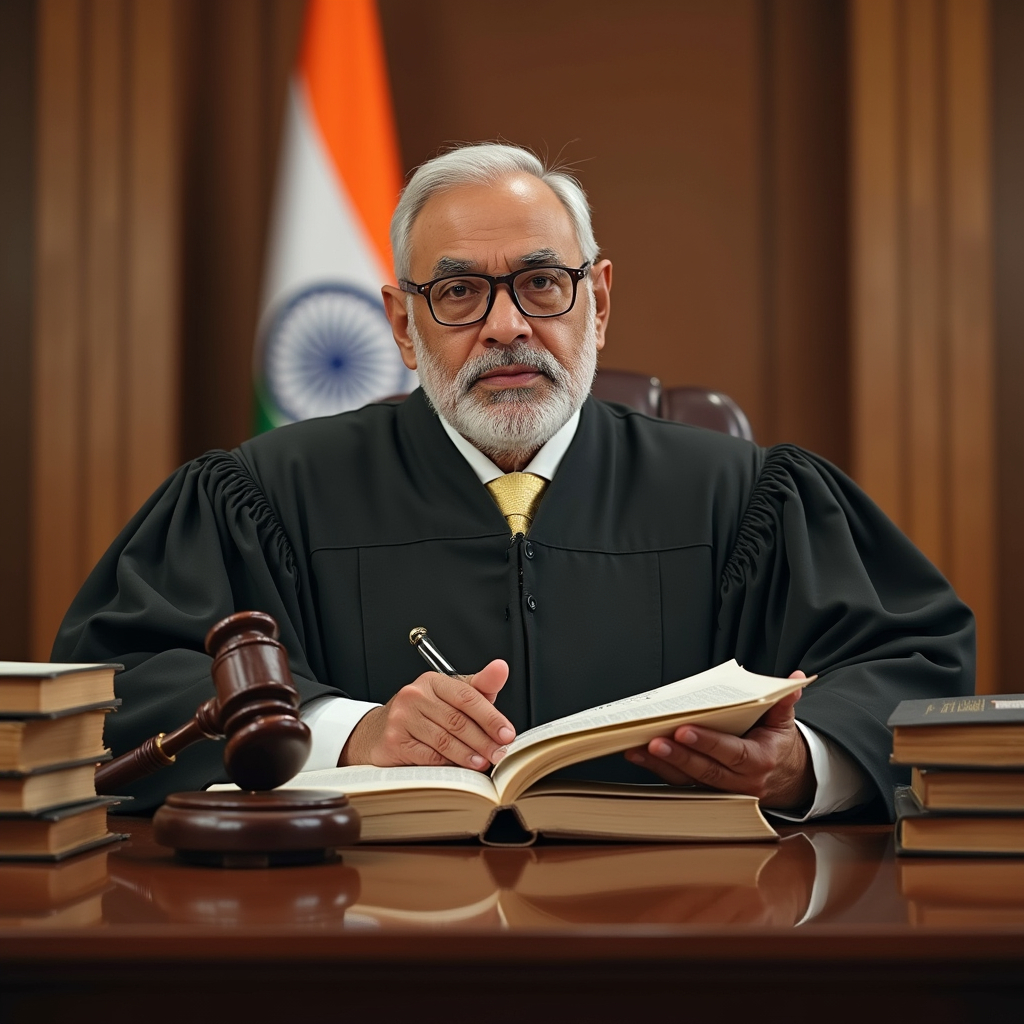
Relevant case laws
Controller General of Patents vs. * Additional (2013)
In this case, the registration of a trademark with the picture of the Attukul deity and on the appellation ‘Sabarimala of women’ was contended to be against the provision of the Trademark Act along with it being in violation of Articles 25 and 26 of the Constitution of India. The usage of such marks, which have religious symbolism, was claimed to be hurtful to the faith of the devotees when such religious idol is reduced to a ‘business outfit’.
It was claimed that the picture of the data is common and cannot be allowed to be monopolised by the trust. Additionally, the grant of such registration would bring about a commercial advantage and reduce the temple to a source of commerce, which would hurt the faith and belief of the devotees.
The Kerala High Court held that in India, it is a very common practice to use the names as well as the pictures of various gods as trademarks. These are not per se regarded as offending religious sentiments. However, the use of such symbols in relation to particular goods have the tendency to hurt religious sentiments. For example, the use of such duties, on footwear or on tobacco, etc. would be considered in bad taste.
The trust claimed that it stands in the status of the manager of the estate of the deity, who is considered a perpetual minor, and they only see the registration of the trademark in respect of various services provided, for example, ‘anndana’ etc. The court held that there was no ground to refuse registration of the trademark as the mere usage of the image of the deity is not likely to hurt religious sentiments.
Section 9(2)(c): Marks which are scandalous or obscene
This subsection bars the registration of a trademark which consists of any scandalous or obscene matter. The question of what constitutes scandalous and obscene must be analysed in light of the development of society. In the case of Ranjit D. Udheshi vs. the State of Maharashtra (1964), the Apex Court discussed the Hicklin test, which was laid down in the case of R vs. Hicklin (1868) and held that obscene would mean any matter which corrupts the mind of those who are open to such immoral influences, regardless of its artistic merit.
In another case of Aveer Sarkar vs. the State of West Bengal (2014), the Supreme Court applied the ‘community standard test’ according to which the impact of such matter as a whole has to be examined on the society as per the prevalent notions of what is considered obscene. This new test required that a conviction be based on a finding that the average person applying contemporary community standards would feel that the dominant theme of the material taken as a whole appealed to a prurient interest in sex.
While in the case of S. Rangarajan vs. Jagjivan Ram (1989), the Apex Court held that the standard to evaluate the obscenity is that of a reasonable man, an ordinary person of common sense and prudence.

Myntra, which is the leading e-commerce website was forced to change its logo after an activist, Naaz Patel, filed a complaint with the cyber police alleging that the logo was insulting and offensive towards the woman as it resembled a bare woman. After this, the Mumbai police cybercrime department discussed the issue with the Myntra official and asked them to change the logo. This can be taken as an example of a trademark being scandalous or offensive. To know more click here.
Section 9(2)(d): Mark prohibited by law
This subsection bars the registration of a trademark which contains a mark, the usage of which is prohibited as per the Emblems and Names (Prevention of Improper Use) Act, 1950. Under Section 4(1)(b) of the said Act, it has been stated that no competent authority will register a trademark which bears any emblem or name as provided in the Schedule of the Act. Under this Act, the following are a few of the emblems that have been prohibited to be registered as a trademark:
- The name, emblem or the official seal of the United Nations Organisation (UNO).
- The name, emblem or official seal of the World Health Organisation (WHO)
- The national flag of India.
- The name, emblem or official seal of the President or Governor of India.
- The name or factorial representation of Shri Lal Bahadur Shastri.
- The name and emblem of the Federation Internationale de Football Association (FIFA) etc.
Section 9(3) of Trademarks Act, 1999
In this subsection, the mark consisting of a shape is dealt with. Under the Trademarks Act 1999, Section 2 (zb) expressly allows for the registration of the shape of the goods as being constituent elements of the trademark. A trademark is a mark which is capable of being represented graphically and distinguishes the goods of one person from another. This distinctive factor can also be a shape in the case of goods. A shape mark is a trademark consisting of a 3-dimensional shape, which is capable of distinguishing the goods of one individual from another.
The legislature has given statutory recognition to the shape in which the goods are marketed along with their packaging, and the combination of colours used. These components are a part of the trade dress. The distinctive nature of a particular good can also be seen in terms of the unique shape in which the goods are presented. These shapes must be indicative of the origin of such goals and must not merely be a result of technical considerations or functional aspects.
Section 9(3)(a): Shape resulting from the nature of goods
This subsection bars the registration of a trademark which consists of the shape of a particular good, resulting from the nature of the good itself. For example, the shape of a chocolate bar or ice cream sandwich cannot be registered as a trademark, since it results from the nature of the goods itself. Another example can be taken of the default shape of mugs, glasses, vases, etc.
Section 9(3)(b): Shape required to achieve technical result
This subsection bars the registration of a trademark in respect of the shape of goods which is essential in order to achieve a technical result. For instance: the shape of a straw or the shape of a car tyre.
In the case of Delta Sport Handelskontor vs. EUIPO – Lego (2024), the Danish toymaker Lego was the owner of a trademark for the three-dimensional shape of a Lego brick or the design of the plastic building block. A competing German manufacturer Delta sport applied to have the Lego trademark declared invalid.
It was claimed by the german manufacturer that the design mark of the Lego brick which are alleged to be unique are in reality only related to the technical function of the product, thereby cannot be trademarked. The interlocking brick developed by Lego was registered in 1958. Finally the European Court of Justice in Luxembourg upheld the claim of Lego by stating that “It must be stated that the smooth surface of the upper face of the product concerned by the contested design is not included among the features identified by the Board of Appeal. It is a feature of appearance of that product.”. Thereby holding that the interlocking design is eligible for trademark protection.
Section 9(3)(c): Shape which provides substantial value to goods
This subsection bars the registration of a trademark consisting of a shape which provides substantial value to the goods. The test to decipher what adds a substantial value to the goods is what compels a particular customer to select a particular shape over other shapes and materials or any other attributes of the product. Shapes adding substantial value to the goods can be understood as the shapes which make the products comparatively more effective in carrying out the required tasks. For instance, the shape of straws, cups, tyres, etc., are functional aspects and are, therefore, unregistrable.

Relevant case laws
Apollo Tyres Ltd. vs. Pioneer Trading Corporation (2017)
In this case, the appellant had filed a suit to restrain the defendant from using the registered trademark of the appellant in respect of the tread pattern upon a tyre. Mark defined under Section 2(1)(m) includes the ‘shape of goods’. Further, a trademark under Section 2(1)(zb) is defined as a mark which plays the role of distinguishing the goods of the applicant from others and can be graphically represented and includes the shape of goods etc. therefore the tread pattern on the tyre must fall within the term shape. This tread pattern must be applicable to be protected, as this is something invented by the applicant and is unique to his goods. This pattern plays a very important role in the differentiation of types from different manufacturers.
No party can claim proprietary over the shape of a tyre, since all tyres are round in the shape of a wheel, which is a functional requirement. Furthermore, no party can claim proprietary over the technique/practice of providing treads in a tyre, since even treads are functional, i.e. they afford the necessary grip between the tyre and the ground during movement of the vehicle to keep it substantially stable. No party can claim proprietary over the technique/practice of having a plurality of ribs, separated by grooves, which create the tread on the tyre.
However, the tread pattern can be registered as a trademark, i.e., used as a source identifier. The registration of a tread pattern as a trademark does not mean that the unique pattern of the tread adopted by a particular manufacturer, which constitutes its unique design and shape, would not be entitled to protection as a design, under the Designs Act, 2000. This essentially means that in case a tread pattern is also applicable to be protected under the Trademark Act as a shape mark, the dual protections can co-exist.
What is functional in a tyre are the “treads” and not the “tread pattern”. Therefore, the tread pattern can be registered.
Whirlpool of India Ltd vs. Videocon Industries Ltd (2014)
In the case, the plaintiff claimed protection for the shape and configuration of its washing machine. It was contended that the functional parts which include the drums etc are inside the machine and what is sought to be protected is only the shape and configuration of the machine. The outer receptacle is designed to look appealing to the eye and serves no functional purpose. The Bombay High Court protected the design of the plaintiff’s semi-automatic washing machine since the same was unique and had no attribute of functionality.
Koninklijke Philips Electronics Ltd. vs. Remington Consumers Products Ltd (2000)
In this case, the European Court of Justice was dealing with the registration of the trademark of the appellant in reference to a 3 headed rotary electric trimmer. The appellant contended that the shape depicted in the trademark was not the only way to achieve optimum results, and subsequently produced equally efficient designs. To obtain the functionality, neither the particular number of rotating razors nor the assembled triangular shape was required.
The court held that as per the ground provided under Section 9(1)(b) of the Trademarks Act, the words “which is necessary to obtain a technical result” are not defeated by merely producing other shapes which are capable of producing equivalent results. The only requirement of the Section is that the essential features of the shape are linked only to the technical result. To accept the interpretation of the appellant, it would open the gates for registration of all alternative shape formations which achieve the functional result. Therefore the court refused to uphold the validity of the trademark of the appellant.
Zippo Manufacturing Company vs. Anil Moolchandani (2011)
In this case, the Delhi High Court granted protection to the shape of a lighter manufactured by the plaintiff, having regard to the unique shape. The unique shape had no functional aspect, therefore replication of the shape would lead to misleading the public to believe that the lighter of the defendant is manufactured by the plaintiff company. Thereby, the court injuncted the respondent from using a shape identical to the one registered by the appellant.
Gorbatschow Wodka KG vs. John Distilleries Limited (2011)
In this case, the plaintiff claimed trademark protection in reference to the shape of the bottles of vodka as being distinctive and thereby a part of the goodwill and reputation of the product of the plaintiff. The defendant had adopted a bottle which was similar to that of the plaintiff. On this ground, the plaintiff claimed that his remark had been diluted.
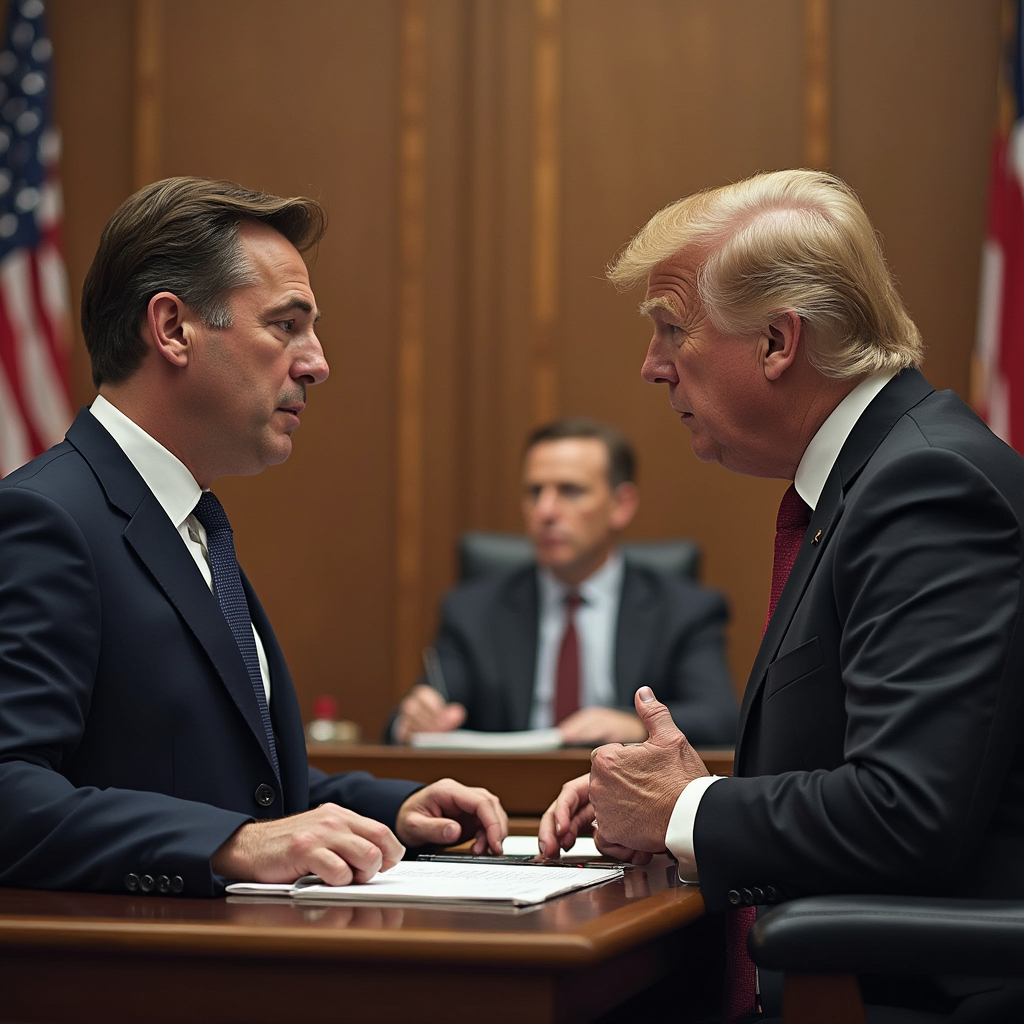
It was contended by the plaintiff that the shape of the bottle of the plaintiff has no functional aspect with the nature of the product or the quality, which is a prerequisite of a container in which the vodka can be sold. The shape is only provided to give the product some appeal.
It was held that the shape is novel and is a result of the imagination of the plaintiff. On comparison, the Bombay High Court felt that both the bottles had a striking similarity. The Trademark Act protects the shape of the goods by statutorily recognising them as an element of trademark. It is possible that the particular shape of the goods could become a source identifier for the goods, and the imitation of such shape by other people may cause confusion among the consumers regarding the source of the goods.
Conclusion
Since time immemorial, people have been extremely cautious when it comes to the protection of their property. In the contemporary era, we have seen the emergence of a new kind of property, which is the intellectual property. These seek to protect the innovations and imagination of an individual from imitation and exploitation by others. However, this right to register a particular trademark and enjoy the exclusive usage of it is restricted by some absolute grounds of refusal, which are guided by public policy.
The objective of a trademark is to ensure that the consumer is able to identify the source of a particular product. When a trademark does not fulfil this objective, it may be refused registration. Under Section 9 of the Trade Marks Act, 1999, various grounds for refusal are given, such as lack of distinctiveness or descriptive terms or likely to cause deception or confusion, or the terms which may be obscene or scandalous that are barred from being registered as trademarks. However, even where the term lacks inherent distinctiveness, it can nevertheless be registered if acquired distinctiveness is proved. Therefore, a balance is maintained by the provisions of the Trademarks Act between the rights of the applicant and the public.
Frequently Asked Questions (FAQs)
What are the different types of trademarks?
With the widening use of trademarks to protect particular aspects like the reputation and the goodwill of one’s business, the arena marks which can be registered as trademarks have also widened. The various types of trademarks which are registrable are:
- Word marks– Marks consisting of words, letters or numerals. For example, OnePlus, Samsung, Disney, Pixar, etc.
- Device marks– Marks which are an exclusive or unique representation of words etc, for example- Amazon or eBay.
- Figurative marks or logos– Marks which are visual representations of a symbol, for example: the swoosh of Nike or the Lady on the Starbucks logo.
- Service marks– These marks differentiate the services of different companies, for example- The name ‘United Airlines’, the ‘Fly the friendly skies’ tagline, and the logo of a world map are service marks. This is because United provides a service: airline flights around the world.
- Collective marks– It is used by a group of companies or associations, for example- CA for Institute of Chartered Accountants or CPA used for members of the Society of Certified Public Accountants.
- Certification marks– It is used to define standards and assure that the particular product meets those standards. For example, Hallmark, ISI, FSSAI, etc.
- Well-known marks– These are marks which have gained recognition on a large scale by the public, for example- Audi logo, Ferrari, etc.
- Colour mark– A specific combination of colours, for example- red and yellow in McDonald packaging.
- Sound mark– These consist of specific sounds used to identify the source, for example- 20th Century Fox Studios music.
- Smell mark– An example of a smell mark is the Brazilian footwear company Grendene successfully trademarked their line of bubble gum-scented jelly sandals in June 2015.
- Shape mark– This aspect is also called the trade dress, it includes a particular unique non-functional shape, for example, Coca Coca-Cola bottle shape, the shape of a Toblerone chocolate bar.
How to register a trademark online?
Any person who seeks to use and register a trademark to use in reference to a class of goods in his business. The following entities are allowed to get a trademark registered: limited liability partnerships, partnership firms, individuals etc.
In India, the e-filing process has the following steps:
- Creation of an account on the Intellectual Property India portal.
- Create a trademark application with details of the applicant’s name, address, trademark representation etc
- Payment of fees for the application on the Intellectual Property India portal.
- Submit the application on the portal.
- The application is then scrutinised by the trademark office and any objective and deficiencies if found would be intimidated.
- After examination, it is published in the trademark journal for public notice and inviting objections.
- Finally, the trademark is registered for a period of 10 years and the certificate is given.
What is the difference between a suit for infringement and a suit for passing off under trademark law?
Infringement of a trademark is a statutory remedy dealt with under the Trademarks Act, 1999. It refers to a breach of a trademark owner’s exclusive right of usage over his registered trademark. By registration, the proprietor of the trademark acquires exclusive rights to use the trademark for the goods and services in respect of which it was registered. When another person uses an identical or deceptively similar mark for their similar goods as that of the registered owner, the cause of action for a suit of infringement is made out.
Passing off is based on the principle that nobody has the right to represent his goods as the goods of another. Passing off action has not been dealt with under the Trademarks Act, 1999. The action of passing off lies in the case of unregistered trademarks, wherein there is a misrepresentation of the trademark of the owner by a person in furtherance of his trade in order to attract customers by causing confusion in their minds as to the goods, this misrepresentation has to be with an ill intention and should result in the injury to the business and the goodwill of the original owner.
What is the Madrid system?
The Madrid system is a system designed for a convenient and simplified registration of trademarks worldwide. It allows the applicant to file one application and only one time fees for registration of his trademark in up to 131 nations. Further, the modification, renewal or expansion of the global trademark portfolio can also be managed from one centralised system.
What is a well-known trademark?
Section 2(zg) of the Trademark Act defines a “well-known trademark” which, in relation to specific goods or services, means a mark which has become so to the substantial segment of the public which uses such goods or receives such services that the use of such mark in relation to other goods or services would be likely to be taken as indicating a connection in the course of trade or rendering of services between those goods or services.
In the case of Tata Sons Ltd. vs. Manoj Dodia & Ors. (2011), the Delhi High Court laid down a few factors which must be considered to examine whether a particular trademark is a well-known trademark. It is a mark which has a popular reputation among the relevant masses. The court needs to consider several factors, including:
- The extent of knowledge of the mark and its recognition by the relevant public,
- The duration of the use of the mark,
- The area in which it is publicised or advertised.
What is the Hicklins test?
The hicklins test originated in the case of Regina vs. Hicklin (1868). Lord Chief Justice Alexander Cockburn supplied a broad definition of obscenity, based on ascertaining “whether the tendency of the matter is to deprave and corrupt those whose minds are open to such immoral influences and into whose hands a publication of this sort may fall.”
References
Students of Lawsikho courses regularly produce writing assignments and work on practical exercises as a part of their coursework and develop themselves in real-life practical skills.
LawSikho has created a telegram group for exchanging legal knowledge, referrals, and various opportunities. You can click on this link and join:
Follow us on Instagram and subscribe to our YouTube channel for more amazing legal content.
 Serato DJ Crack 2025Serato DJ PRO Crack
Serato DJ Crack 2025Serato DJ PRO Crack


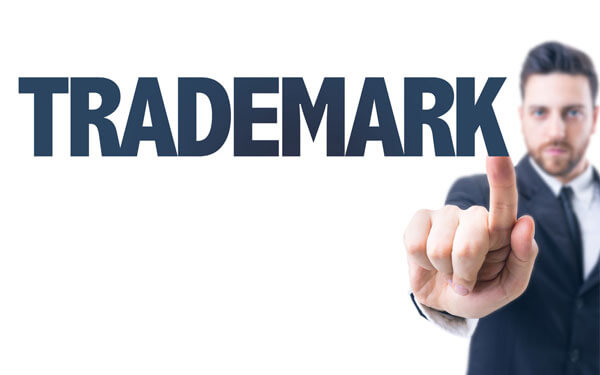







 Allow notifications
Allow notifications



